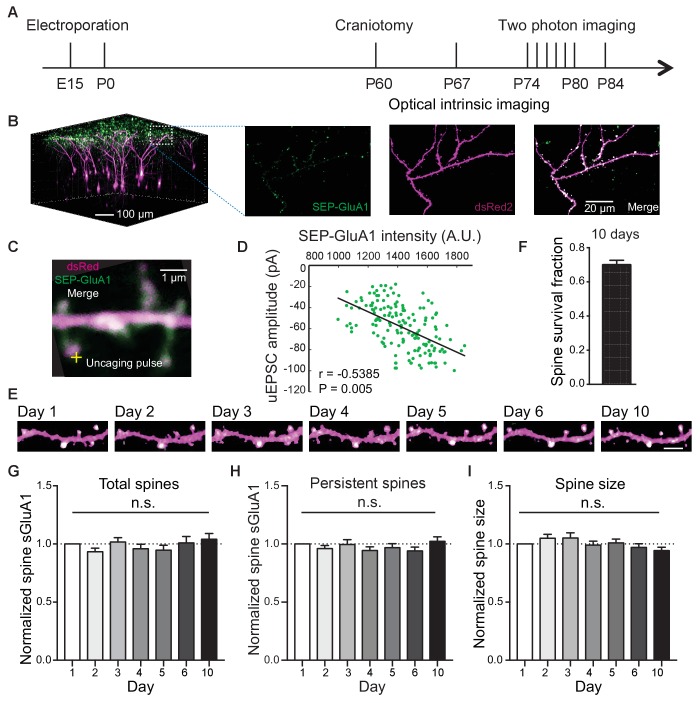Published manuscript on how sensory deprivation affects cortical AMPA receptor expression
We published a new manuscript describing how brain AMPA receptors respond to sensory deprivation. This is in collaboration with the lab of Rick Huganir and includes exceptional work by all authors including Han Tan.
Tan, H. L., Roth, R. H., Graves, A. R., Cudmore, R. H., and Huganir, R. L. (2020). Lamina-specific AMPA receptor dynamics following visual deprivation in vivo. Elife 9, e52420. doi:10.7554/eLife.52420.

Regulation of AMPA receptor (AMPAR) expression is central to synaptic plasticity and brain function, but how these changes occur in vivo remains elusive. Here, we developed a method to longitudinally monitor the expression of synaptic AMPARs across multiple cortical layers in awake mice using two-photon imaging. We observed that baseline AMPAR expression in individual spines is highly dynamic with more dynamics in primary visual cortex (V1) layer 2/3 (L2/3) neurons than V1 L5 neurons. Visual deprivation through binocular enucleation induces a synapse-specific and depth-dependent change of synaptic AMPARs in V1 L2/3 neurons, wherein deep synapses are potentiated more than superficial synapses. The increase is specific to L2/3 neurons and absent on apical dendrites of L5 neurons, and is dependent on expression of the AMPAR-binding protein GRIP1. Our study demonstrates that specific neuronal connections, across cortical layers and even within individual neurons, respond uniquely to changes in sensory experience.